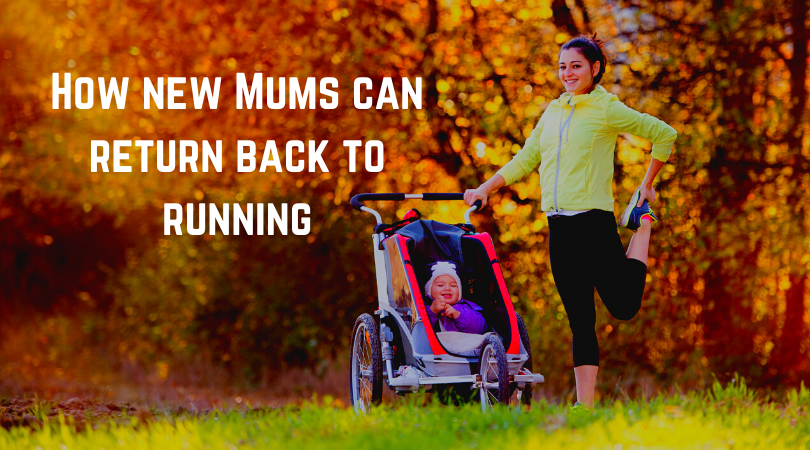When can new mums can return back to running

Firstly, thank you to the authors Tom Goom, Gráinne Donnelly and Emma Brockwell for publishing the new post partum running guidelines. For more information I will include the link here. It is often a concern for new mums, they love running but also want to respect the healing process. But how is a new mum suppose to know when they are ready?
Week 0 to 2 postnatal:
After having a baby your body needs time to heal and regain its strength. Because of this, running is not advisable within 3 months of have a baby and this can even be extended if pelvic floor dysfunction is identified. All women, regardless of how they deliver need to seek out a pelvic health assessment with a specialist physiotherapist before getting the all clear to return to running. Since you are unable to run in the first 3 months, I have provided a condensed list of exercises that are appropriate if symptoms allow. So for the first 2 weeks, starting some pelvic floor & basic core exercises along with walking is recommended under the right guidance.

Week 2 to 8 postnatal:
If everything is recovering well within the first few weeks a mum can introduce some light exercises. This will all be tailored to the individual but some week 2-4 examples include body-weight squats, lunges and bridging. Progressing to weeks 4 to 6, indoor cycling on a stationary bike or light exercise on the cross-training can be implemented. Week 6 to 8 will introduce power walking, while increasing the duration and intensity of low impact exercise. For example, increasing a squat to 15-20kgs while also adding in deadlifts. If you follow this protocol, you will be slowly preparing your body for running. It is not recommended to skip this phase and instantly return to running expecting to have recovered.
Beyond 3 to 6 months for running mums:
At 3-6 months a women’s health physiotherapist will assess your readiness to run. This will consist of questionnaires & and a face-to-face consult to identify pelvic floor symptoms, psychological status and any other musculoskeletal symptoms. Following on, the fitness testing component requires a pelvic floor assessment along with jogging on the spot for 1 minute, hopping on the spot, balancing and bounding. Capacity tests will also be carried out, with the aim to achieve 20 repetitions of:
- Single leg calf raises
- Single leg bridge
- Side lying abduction
- Single leg sit to stand
If your physiotherapist and other medical staff give you the all clear to start running, a very gradual program such as the ‘couch to 5k’ will be perfectly suitable. The PDF of the guidelines also includes information on sleep, breastfeeding, running with a buggy, weight control and psychological status.

A note on Stress & Sleep:
Outside of these guidelines, I should mention the link between stress, lack of sleep and running-related injuries.